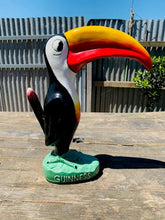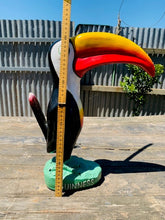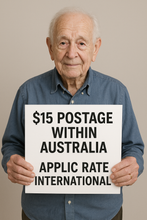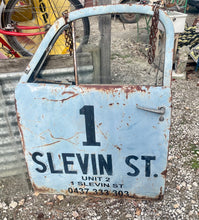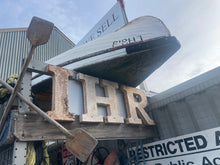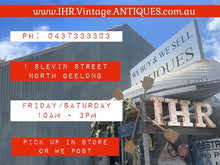
Iconic brewery brand collectible.
pick up from us or we can post it
Very vivid colours and made from a plastic/resin
Arthur Guinness started brewing ales in 1759 at the St. James's Gate Brewery, Dublin. On 31 December 1759, he signed a 9,000 year lease at £45 per annum for the unused brewery.[6][7][8] Ten years later, on 19 May 1769, Guinness first exported his ale: he shipped six-and-a-half barrels to Great Britain.
Arthur Guinness started selling the dark beer porter in 1778.[9] The first Guinness beers to use the term were Single Stout and Double Stout in the 1840s.[10] Throughout the bulk of its history, Guinness produced only three variations of a single beer type: porter or single stout, double or extra and foreign stout for export.[11] "Stout" originally referred to a beer's strength, but eventually shifted meaning toward body and colour.[12] Porter was also referred to as "plain", as mentioned in the famous refrain of Flann O'Brien's poem "The Workman's Friend": "A pint of plain is your only man."[13]
Already one of the top-three British and Irish brewers, Guinness's sales soared from 350,000 barrels in 1868 to 779,000 barrels in 1876.[11] In October 1886 Guinness became a public company, and was averaging sales of 1.138 million barrels a year. This was despite the brewery's refusal to either advertise or offer its beer at a discount.[11] Even though Guinness owned no public houses, the company was valued at £6 million and shares were 20 times oversubscribed, with share prices rising to a 60 per cent premium on the first day of trading.[11]
The breweries pioneered several quality control efforts. The brewery hired the statistician William Sealy Gosset in 1899, who achieved lasting fame under the pseudonym "Student" for techniques developed for Guinness, particularly Student's t-distribution and the even more commonly known Student's t-test.
By 1900 the brewery was operating unparalleled welfare schemes for its 5,000 employees.[11] By 1907 the welfare schemes were costing the brewery £40,000 a year, which was one-fifth of the total wages bill.[11] The improvements were suggested and supervised by Sir John Lumsden. By 1914, Guinness was producing 2.652 million barrels of beer a year, which was more than double that of its nearest competitor Bass, and was supplying more than 10 per cent of the total UK beer market.[11]
Before 1939, if a Guinness brewer wished to marry a Catholic, his resignation was requested.[14] According to Thomas Molloy, writing in the Irish Independent, "It had no qualms about selling drink to Catholics but it did everything it could to avoid employing them until the 1960s."[15]
Guinness thought they brewed their last porter in 1973.[12] In the 1970s, following declining sales, the decision was taken to make Guinness Extra Stout more "drinkable". The gravity was subsequently reduced, and the brand was relaunched in 1981.[16] Pale malt was used for the first time, and isomerised hop extract began to be used.[16] In 2014, two new porters were introduced: West Indies Porter and Dublin Porter.[17]
Guinness acquired the Distillers Company in 1986.[18] This led to a scandal and criminal trial concerning the artificial inflation of the Guinness share price during the takeover bid engineered by the chairman, Ernest Saunders.[19] A subsequent £5.2 million success fee paid to an American lawyer and Guinness director, Tom Ward, was the subject of the case Guinness plc v Saunders, in which the House of Lords declared that the payment had been invalid.[20]
In the 1980s, as the IRA's bombing campaign spread to London and the rest of Britain, Guinness considered scrapping the Harp as its logo.[15]
The company merged with Grand Metropolitan in 1997 to form Diageo.[21] Due to controversy over the merger, the company was maintained as a separate entity within Diageo and has retained the rights to the product and all associated trademarks of Guinness.
The Guinness brewery in Park Royal, London closed in 2005. The production of all Guinness sold in the UK and Ireland was moved to St. James's Gate Brewery, Dublin.[22]
Guinness has also been referred to as "that black stuff".[23] Guinness had a fleet of ships, barges and yachts.[24] The Irish Sunday Independent newspaper reported on 17 June 2007 that Diageo intended to close the historic St James's Gate plant in Dublin and move to a greenfield site on the outskirts of the city.[25] This news caused some controversy when it was announced.





